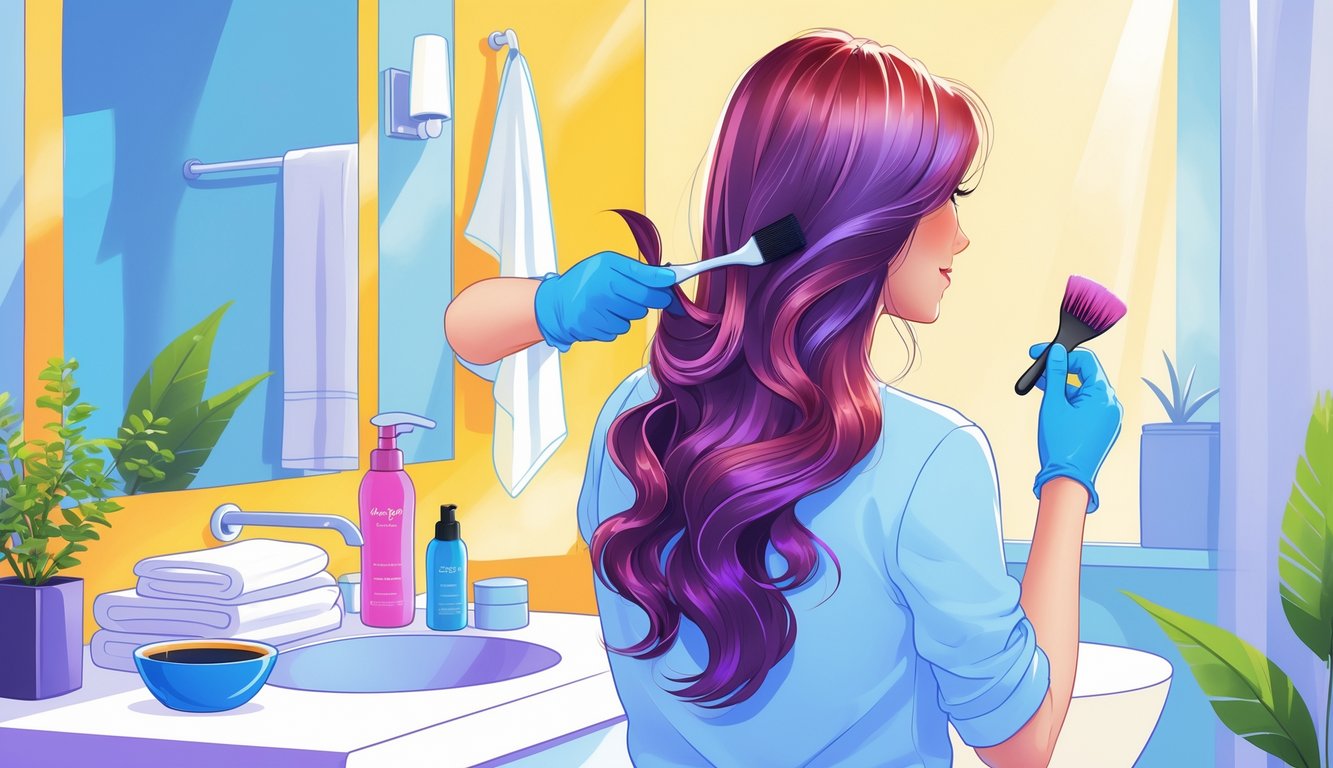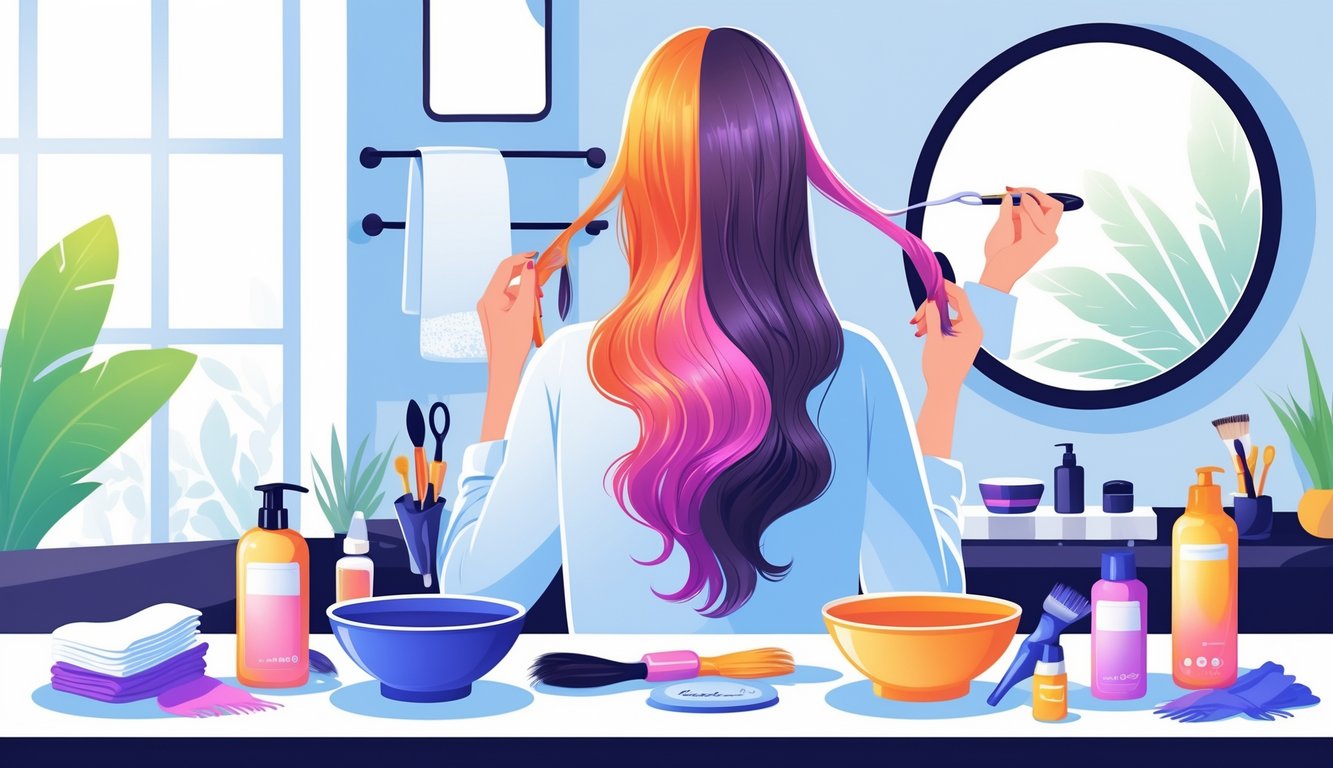
Okay, so here’s what still baffles me: everyone claims they want “salon results” at home, but nobody actually talks about the one step that matters—prepping your hair. I mean, why’s it always about the brand or the influencer’s “miracle” kit? You can drop $40 on a “pro” dye and binge every YouTube tutorial, but if you don’t wash, clarify, and dry your hair before coloring? You’re basically begging for a disaster. And yeah, I know, stylists keep repeating this like a broken record, but people just tune it out. If you skip proper prep, you’re sabotaging your own color. Period. I’ve had stylists (especially that one in Brooklyn with the neon shoes) tell me, “Leftover oil or product? Congrats, your color’s gonna look like a toddler’s finger painting.”
It’s wild—people will obsess over which developer to buy, stress over timing, and then just slap dye on dirty, oily hair. I’ve done it. I’ve tried to cheat the process, thinking, “Eh, maybe this time it’ll work.” It never does. You want to know the real hack? Forget the Instagram hype and the “ammonia-free” buzzwords. Just prep your hair like you actually care. Every stylist I know? They agree: prepping right is the only thing that consistently predicts good results. Even Overtone sneaks in prep tips, but nobody reads that part—they’re too busy drooling over swatches.
Does anyone else feel like prepping is as exciting as watching paint dry? But screw it up once and suddenly you’re rocking orange roots and patchy ends. I once tried a shortcut from TikTok and ended up with a two-tone nightmare. Moral of the story: boring prep beats trendy products every time. Overtone’s guides practically scream about it, but you have to dig through a wall of product photos to even notice.
Understanding Salon-Grade Results at Home
So, these at-home dye kits—people act like you just follow the instructions and boom, instant salon hair. If only. Can we talk about why nobody ever explains what actually makes salon color different? Why do my roots always look weird, even after following all those “pro tips” online?
The Difference Between Salon and At-Home Hair Color
Every time I crack open a box dye (and yeah, I’ve tried too many), it’s always the same: flat, weirdly uniform color that never matches the box. My stylist once laughed and said salons mix custom formulas for every person—like, they’re literally making it up as they go, based on your hair. Total opposite of box dyes, which are just one-size-fits-all, loaded with strong developer to force the color. That’s why your hair feels fried after.
I finally dug into why salon color is pricey—it’s because they actually look at your hair’s color, texture, and history. A box kit? Doesn’t care. So if someone tells you “it’s the same,” check their hair for weird stripes.
I have a friend who’s a colorist—she says box dye skips all the steps that matter, the stuff only salons know how to tweak. She’s not wrong, but I’ll never admit that to her face.
What Makes a Result Truly Salon-Like
This is where things get messy. Everyone online says, “Just add a gloss!” or “Use a toner!” but honestly, if you’re chasing that shiny, healthy salon look, you need to worry about stuff like pH, pigment layers, even whether you’re rinsing with hot or cold water. No YouTuber covers that unless you specifically ask, and even then, it’s vague.
I skimmed some industry report last year (so many pages, so little new info) and it basically said: lasting results depend on both pro-level chemistry and in-salon techniques like sectioning and timing. Stylists have a weird sixth sense for when to adjust color on the fly—meanwhile, the rest of us don’t even realize our hair’s turning brassy until it’s too late.
Instead of buying another “ash brown” box and hoping for the best, maybe notice how salons mix toners, conditioners, and different developer strengths each time. I didn’t believe it mattered until a stylist added extra gold to my highlights and suddenly my hair wasn’t sad and dull anymore.
Key Benefits of Salon-Grade Coloring
People love to complain about salon prices, but nobody talks about why the results are better. It’s not just the dye—it’s the ingredients and the aftercare. Keratin, argan oil, silk proteins—those aren’t just buzzwords. Pro brands actually use them to protect your hair while coloring. My hair always feels less like hay after a salon session.
Friends who splurge on pro products at home (Redken, Wella, whatever) always brag about brighter color and less breakage. It’s not magic. The payoff is stubborn color that doesn’t fade after a week at the beach or a winter of dry heat. Maybe that’s why stylists charge more. Or maybe they just know we’ll mess it up and come crawling back.
Skip these steps, and don’t be surprised when your color fades after three washes. The shortcut never works—unless you enjoy awkward salon confessions about your box dye disaster. Colorists know. They always know.
Why the Overlooked Step Matters Most

Honestly, most home color fails aren’t about the dye, they’re about skipping the boring prep stuff. You’d think it’s the mixing or the application, but nope—it’s always the tiny steps hidden in the fine print. Most disasters? Blotchy roots, flat color, weird bands. All because someone (me, usually) ignored the details.
Commonly Skipped Steps in At-Home Coloring
Everyone knows about “strand tests,” but who actually does them? Not me. My stylist once said, “You just wasted half your result,” and she wasn’t wrong. The usual suspects: skipping clarifying shampoo (even though buildup blocks color), lazy sectioning (because who has time?), or just slapping dye on oily hair and hoping for the best.
My neighbor never uses gloves—her hands are purple for a week. And those warnings about barrier cream? People ignore them until they’re scrubbing dye off their ears for days. I heard from someone at a pro brand that over 60% of failed colors come from bad prep or skipped steps. That’s probably why salons stay in business. Colorists have seen it all.
The Science Behind Color Absorption
People think, “If it works at the salon, it’ll work at home.” Not really. Hair cuticle’s like a stubborn gatekeeper—if it’s closed, coated in gunk, or bone dry, color won’t stick right. Porosity changes everything: super-porous hair grabs color too fast and spits it out just as quickly, while greasy or product-loaded hair barely absorbs anything.
I chatted with a chemist who worked on a salon color line, and she said at-home kits just guess what your hair’s like. Too clean? You risk uneven color. Too dirty? Nothing happens. Clarifying and resetting pH isn’t “optional”—it’s just buried in the instructions. The fancier the box claims “salon results,” the more they assume you prepped like a pro. Spoiler: most of us don’t.
How Preparation Affects Final Results
Nobody wants to stress about prep until their hair turns out patchy and they’re comparing it to the Instagram model. I’ve forgotten to dry my hair after a pre-color treatment and ended up with roots and ends in two different universes. Stylists harp on “precise application” because it’s the only way to avoid banding and hot roots.
Every pro color brand manual repeats this: even out porosity, use the right developer, and get rid of all the oils and silicones before you start. Not for fun—for results. I once argued with a friend about box dye layers, until she found out (the hard way) that box dyes can’t fix past mistakes. Salon color expects you to prep. When a colorist says, “Skipping prep ruins everything,” I finally just listen.



